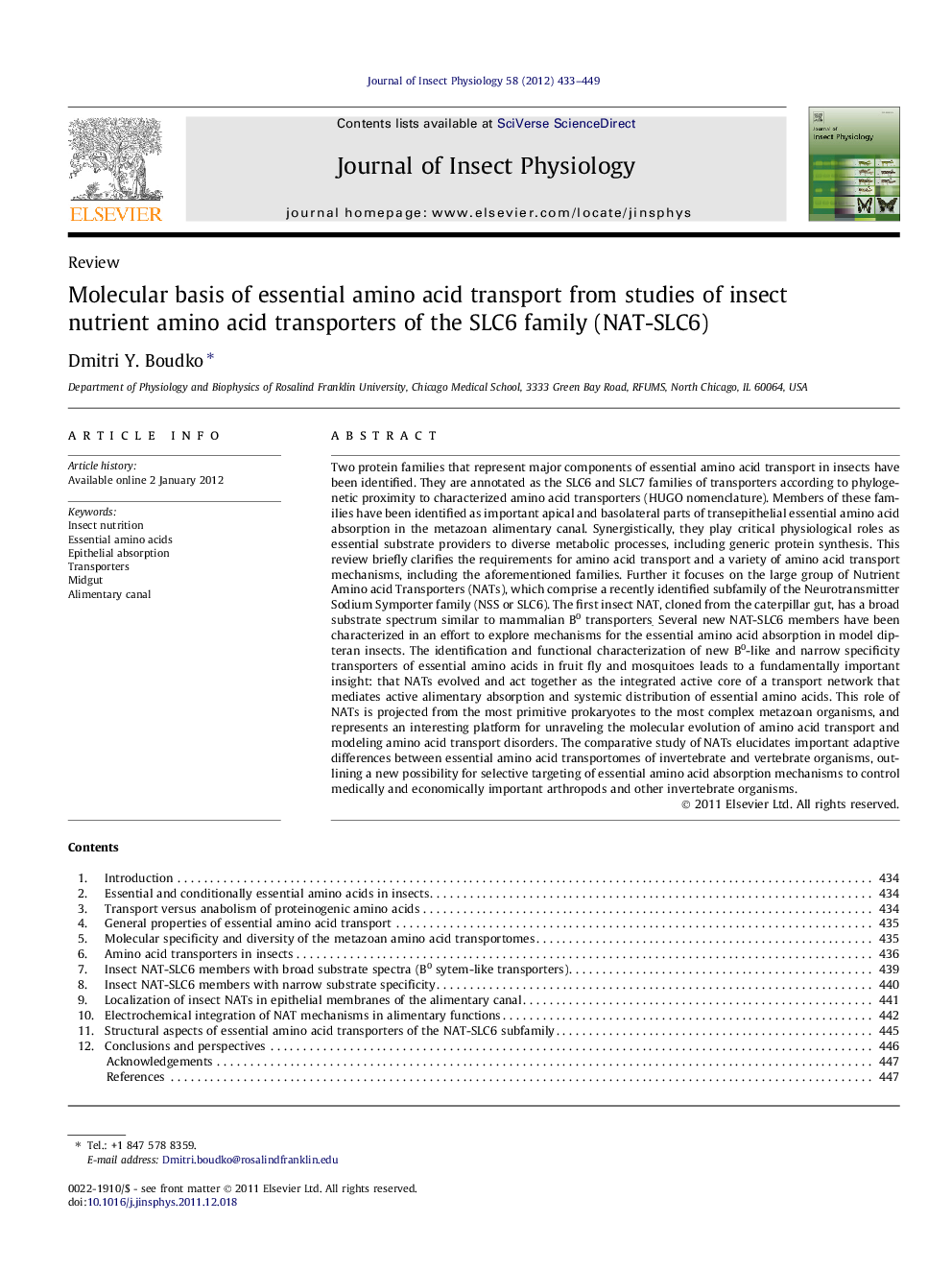| کد مقاله | کد نشریه | سال انتشار | مقاله انگلیسی | نسخه تمام متن |
|---|---|---|---|---|
| 2840619 | 1165341 | 2012 | 17 صفحه PDF | دانلود رایگان |

Two protein families that represent major components of essential amino acid transport in insects have been identified. They are annotated as the SLC6 and SLC7 families of transporters according to phylogenetic proximity to characterized amino acid transporters (HUGO nomenclature). Members of these families have been identified as important apical and basolateral parts of transepithelial essential amino acid absorption in the metazoan alimentary canal. Synergistically, they play critical physiological roles as essential substrate providers to diverse metabolic processes, including generic protein synthesis. This review briefly clarifies the requirements for amino acid transport and a variety of amino acid transport mechanisms, including the aforementioned families. Further it focuses on the large group of Nutrient Amino acid Transporters (NATs), which comprise a recently identified subfamily of the Neurotransmitter Sodium Symporter family (NSS or SLC6). The first insect NAT, cloned from the caterpillar gut, has a broad substrate spectrum similar to mammalian B0 transporters. Several new NAT-SLC6 members have been characterized in an effort to explore mechanisms for the essential amino acid absorption in model dipteran insects. The identification and functional characterization of new B0-like and narrow specificity transporters of essential amino acids in fruit fly and mosquitoes leads to a fundamentally important insight: that NATs evolved and act together as the integrated active core of a transport network that mediates active alimentary absorption and systemic distribution of essential amino acids. This role of NATs is projected from the most primitive prokaryotes to the most complex metazoan organisms, and represents an interesting platform for unraveling the molecular evolution of amino acid transport and modeling amino acid transport disorders. The comparative study of NATs elucidates important adaptive differences between essential amino acid transportomes of invertebrate and vertebrate organisms, outlining a new possibility for selective targeting of essential amino acid absorption mechanisms to control medically and economically important arthropods and other invertebrate organisms.
Figure optionsDownload as PowerPoint slideHighlights
► The molecular basis of essential amino acid transport in insects is justified.
► It involves members of two families of secondary transporters: SLC6 and SLC7.
► SLC6 members couple cation gradients to alimentary absorption and systemic distribution of essential amino acids.
► Metazoan organisms evolved different systems for essential amino acids absorption.
► Essential amino acid transporters are potential targets for selective control pest and pathogen invertebrates.
Journal: Journal of Insect Physiology - Volume 58, Issue 4, April 2012, Pages 433–449